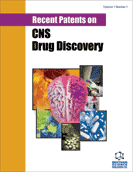Abstract
The brain controls coping with aversive situations, modulating the activity of the adaptive systems (the nervous, endocrine and immune systems). In this review, we focus the involvement of the hypothalamus-pituitary-adrenal (HPA) axis in the stress response. In the physiological response, the hypothalamic paraventricular nucleus secretes CRH (corticotrophin releasing hormone) that stimulates pituitary ACTH (adrenocorticotropic hormone), through CRH-receptor type 1 (CRH-R1). In turn, ACTH activates adrenal glands to produce cortisol, acting on type-2 melanocortin receptors (MC2-R). The glucocorticoid negative feedback inhibits the HPA axis activity through the glucocorticoid receptor (GR). The hippocampus plays a central role as an important connection between cortex and hypothalamus, and, together with the suprachiasmatic nucleus (SCN), regulates cortisol rhythm. Peripherally, an important regulator of cortisol metabolism in local tissues is 11β-hydroxysteroid dehydrogenase type 1 (11β-HSD1), that produces cortisol within the splanchnic bed.
The stress response during chronic conditions increases vulnerability to diseases through the activation of adaptive systems, in particular, the HPA axis. Increased levels of allostatic load (a measure of stress with multisystem dysregulation) are associated with the development of functional and cognitive decline, frailty and with mortality in high-functioning older adults. Moreover, HPA axis hyperactivity is a feature that can be present in chronic diseases, affecting endocrine (abdominal obesity, type-2 diabetes mellitus), cardiovascular (atherosclerosis, essential hypertension) and nervous system (dementia, depression), particularly during comorbid conditions.
In conclusion, the spectrum of molecules interacting at the different levels of HPA axis is exponentially increasing, ranging from supra-hypothalamic targets to post-receptor mechanisms and it includes agents acting on SCN, CRH-R1 receptor, adrenal steroidogenesis, GR and peripheral/central 11β-HSD1 enzyme. This area of research is rapidly advancing in order to develop therapeutic strategies to counteract HPA axis hyperactivity and to reduce the burden of stress-related disorders. The article presented some promising patents on the strategies against glucocorticoid-mediated brain damage.
Keywords: stress, Glucocorticoid, HPA axis, hippocampus, receptor antagonist, stress mediators, hypothalamic-pituitary-adrenal axis, Polymorphisms, Endocrinology, hemodynamic abnormalities
 9
9





















